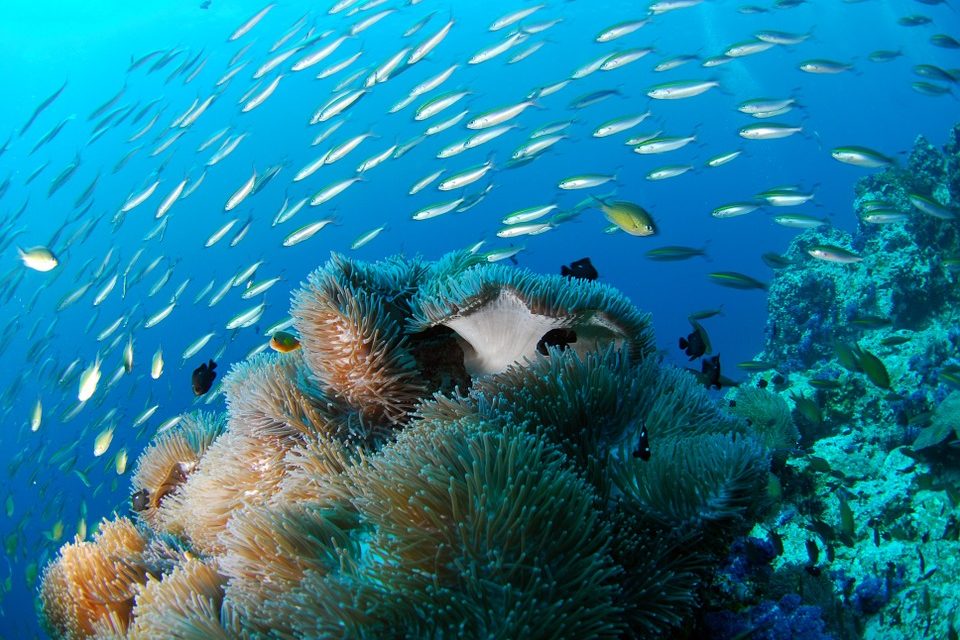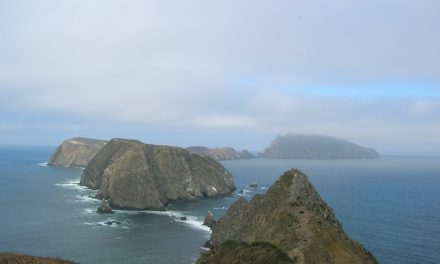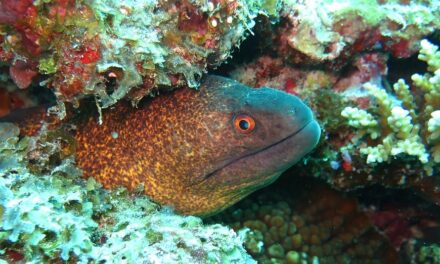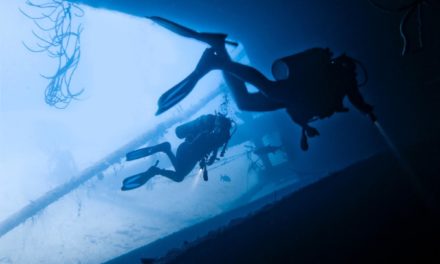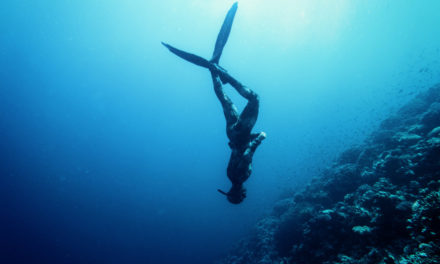Scuba diving is an exciting sport where you get to enjoy the incredible underwater views and explore the wonders of marine life. Whether you’re a beginner or an avid diver, the Caribbean definitely represents a fascinating destination that every scuba diver wants to explore at one point.
The Caribbean Sea attracts thousands of visitors every year. They want to explore the charms of the islands, relax, and enjoy the sandy beaches. Scuba divers also think that the Caribbean is a gold mine with all the beautiful fish, coral reefs and shipwrecks that you can’t find anywhere else.
So what is the best spot to explore on your next scuba diving adventure? How can you guarantee the success of your upcoming Caribbean trip? In this article, you’ll find everything you need to know about going on a scuba diving adventure in the Caribbean.
Scuba Diving Hot Spots in the Caribbean
In addition to the exotic sandy beaches and breathtaking palm trees swinging in the wind, there are numerous treasures to discover that you can only see by stepping into the water. All you need is your scuba diving gear and lots of enthusiasm. Here are six of the best scuba diving spots in the Caribbean.
Glover’s Reef
This is a partially submerged atoll off the coast of Belize. It’s one of the most diverse and healthiest coral reef environments in the Caribbean. It’s currently closed for fishing to preserve the rare marine species residing there, providing months-worth of scuba diving expeditions.
Being one of the only four remaining atolls in the western hemisphere, Glover’s Reef is one of the most interesting and sought out spots to explore with more than 700 patch reefs. It’s an excellent spot to take amazing photos and record videos of the marine wonders including parrotfish, colorful sponges, and friendly dolphins. The abundance of marine life is nowhere else to be found.
Champagne Reef
The name explains why divers love to explore this spot as they enjoy diving through the bubbles coming out of the reefs. These bubbles happen due to the volcanic activity taking place under the reefs and attract thousands of scuba diving and snorkeling enthusiasts.
Lots of tourists agree that the volcanic and reef’s cliffs significantly match the mountains and hills found on the land of Dominica. The colors of the reefs are exceptional as they are home to extraordinary sponges that look like nothing else. Moreover, you can find lots of marine animals and fish that attach themselves to the sponges and greet you as you take your first dive.
In addition to the parrotfish, octopuses, rays, and eels, you can also explore the wrecks of a 17th-century Spanish ship. Swim with the hawksbill turtle or take a photo with a suspicious lobster, the choice is yours.
Hilma Hooker
Are you interested in exploring shipwrecks? This is the right place to begin your scuba diving adventure. The Hilma Hooker is a 72-meter cargo ship that was detained by the Bonaire authorities in 1984. It’s a good place to see how coral reefs artificially develop as they cover the body of the ship and represent an excellent spot for enthusiastic scuba divers.
Hilma Hooker is an interesting marine life spot that shows how long corals take to recover from damage or impact as we watch the growth that took place over the past 30 years. The top of the ship lies at 60 feet below the surface with little chance of penetration diving. Nevertheless, it’s a great spot to take photos and to admire the power of nature at conquering human-made structures.
The Blue Hole of Belize
Another wonder lies off the coast of Belize. The Blue Hole measures more than 900 feet wide and more than 400 feet deep and is considered part of the Barrier Reef Reserve System. Divers love to explore this spot and witness the astonishing marine life and incredible coral formations that grow in the underwater caves.
This is a world-class destination for recreational, amateur, and professional divers. They can find hundreds of nurse sharks, giant troupers, in addition to several types of reef sharks like the blacktip shark.
The Hole is considered to be the biggest natural formation of its kind. Diving should always be done with a master diver and within a group that can keep an eye on each other to avoid accidents. If you want to explore unvisited underwater caves, then the Blue Hole of Belize is the place to start.
The Cathedral at Eagle Shoals
This popular diving site lies across the shores of St. John Island. The reefs extend through the ocean floor creating caves and cliffs that tempt scuba diving enthusiasts to visit the spot and explore the surroundings.
Divers usually describe The Cathedral as a chamber where you expect to see lots of colorful marine creatures with more than 500 species of fish and 40 types of corals, in addition to hundreds of invertebrates.
This spot is accessible to newbies and experienced divers who enjoy diving in the safety of US waters. You can enjoy witnessing the queen triggerfish, spotted eagle rays, creole wrasse fish and turtles roaming the surroundings in the daylight. As it gets darker, the eels, sea horses, and octopuses will start to emerge so you can enjoy the full view.
Butler Bay Shipwrecks
This is a remarkable spot for treasure hunters and people who are interested in historical sites. It’s located to the northwest of the US Virgin Islands and is home to 3 famous shallow wrecks. These include a trawler, an oil barge, and a tug boat. Now, these three vessels serve as a colorful exhibition of coral and sponges in addition to schools of fish.
These ships found their way to the ocean floor in the 80s and 90s but are now filled with pink stylaster coral, tubeworms, stingrays, barracuda, snapper, and angelfish in addition to eels, gobbies, and wrasses. Divers are usually lucky enough to spot turtles roaming around the wrecks.
This site is accessible by boats, and there are some currents so divers should be aware when getting ready for their adventure. The visibility ranges from 100 up to 200 feet with the deepest point of the wrecks located at a depth of 70 feet.
Popular Types of Marine Creatures in the Caribbean
The Caribbean is home to the second largest reef in the world with lots of incredible species that aren’t to be found anywhere else. Here are some of the most popular types of marine creatures that you’re likely to encounter on your upcoming diving adventure.
Caribbean Dolphin

The bottlenose or Caribbean dolphin is one of the friendliest sea mammals, and you’ll probably encounter some on your upcoming diving adventure. Dolphins have a gentle nature and are extremely friendly to divers so if you meet one on your first diving experience you’ll probably come back for more. Although bottlenose dolphins are found in several parts of the world, they’re found in abundance in the Caribbean.
Creole Wrasse
These fish are rarely seen alone, and you’ll most likely find the bright blue and violet fish roaming the colorful coral reefs throughout the day. These small friendly fish are usually found in the outer reef areas so you’ll be able to enjoy their company even if you don’t wish to go on deeper dives.
Parrotfish
Parrotfish are incredibly colorful, and their scales sparkle in the light, amazing viewers with their parrot-like mouths. They feed on several types of reef organisms and even ingest rocks while feeding. When they’re done, they excrete sand that makes the wonderful sandy beaches of the Caribbean. As a matter of fact, one parrotfish can produce up to 90 KG of sand every year. Shouldn’t we thank them for this?
Sea Turtles
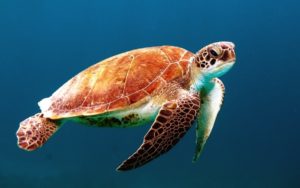
Nothing compares to swimming next to the incredible sea turtles. They’re slow, patient, and extremely friendly if you know how to approach them right. Most of the time, you can witness the hawksbill turtles swarming around the Caribbean so grab your camera and get ready to take some mind-blowing photos.
Rays
There are different types of rays that you can see in the Caribbean, but the southern stingray is the most popular one to find. They glide along the ocean floor looking for food, and you should move slowly around them. Don’t worry because these fantastic creatures are unlikely to get alarmed when you’re swimming carefully next to them. Just be patient and respect their beauty.
Seahorses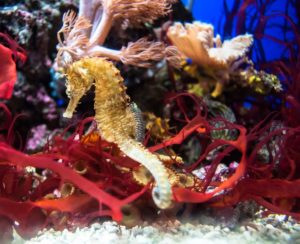
Now you should know that seahorses are very hard to spot. But if you see them, you’ll be amazed at how incredible they look and behave. There are several types that you can find in the Caribbean including the long snout, dwarf, and lined species hidden among the sponges. They’ll make a great addition to your photos collection.
Best Time to Dive in the Caribbean
Most people consider the Caribbean to be a year-round destination. The Caribbean includes several islands and spots that attract scuba divers from all over the globe. However, there is always a warning regarding the hurricane season from June till November.
The hurricane’s strength isn’t the same at every island or destination, and this is something that you should take into consideration while picking your next scuba diving spot. For example, Belize is usually out of the threat belt which makes it a popular destination all year round. The same applies to Honduras that attracts tourists and scuba divers in all seasons.
The eastern section of the Caribbean is generally at a higher risk. The weather in the southern Caribbean is usually better, and people might even go scuba diving without even needing a wetsuit.
What Can You Do While Scuba Diving in the Caribbean?
If you haven’t tried scuba diving yet, then you’re definitely missing out a lot. There are lots of cool things that you can do only when you dive underwater with pretty and colorful fish.
1. Explore Sunken Shipwrecks
Shipwrecks are popular scuba diving sites where divers get to touch old vessels and see how they’ve completely changed over the years. Once home to sailors, these ships are now full of colorful coral reefs and fish that roam around for divers to see.
History lovers usually enjoy exploring these popular sites to learn about the history of these unfortunate vessels and see how coral reefs can flourish in an artificial environment. Don’t forget to grab your camera for some amazing shots.
2. Take Wonderful Photos and Record Videos
You can take amazing photos and videos to share with others or take your game up a notch if you’re planning to become a professional. There’s no doubt that your colorful photos and videos of the underwater world will attract views on social media platforms.
You might even be able to sell them to adventure-related websites. Now imagine getting paid for having fun. Isn’t this a dream come true?
3. Explore The Sea At Night
In addition to the colors you can see in the amazing reefs, there’s a whole new world of nightlife underwater. Nocturnal marine creatures are sometimes believed to be out of this world. Watch as they react to divers’ lights and dance their magnificent, breathtaking dance in the deep water.
4. Face Your Fears
Scuba diving might be your chance to face your demons. You can get face to face with sharks, rays, and eels. These friendly yet magnificent creatures will welcome you to their habitat so you can spend some intimate time with them. Don’t worry because most of the time you’ll be diving with experienced scuba divers who know how to handle the amazing marine life.
5. Join a School
Although fish are usually suspicious, you can join a school of fish if you’re extremely careful. Just go slowly, switch off the light and slip from underneath. Before you know it, you will be a member of the group, swimming along the current and exploring the beauty of the fish family.
6. Go Spearfishing
Is it time for a meal? Why not take your pole spear and go hunting? Spearfishing is an ancient way of fishing that doesn’t cause harm to the marine environment, unlike other modern ways of fishing.
However, you should be careful about the type of fish you’re aiming for. Ask a master scuba diver before aiming for a fish, since some species are not edible. You should also avoid spearfishing in preserved areas where fishing is prohibited.
7. Try a Jetpack
The jetpack is an interesting piece of equipment to add to your scuba diving gear. This device is worn like a belt to help you push your way through the water. It doesn’t restrict your movement, and your hands will be free so you can take amazing photos, record videos, or just enjoy the views.
8. Discover the Species
Looking at fish in books is something, but looking them in the eye is something else. You get to see how they behave in their natural habitat and might even be part of a new scientific discovery.
Scuba divers usually participate in scientific discoveries by spotting new fish especially in highly diverse areas like the Caribbean. Keep your eyes and mind open, and you might be able to spot a fish that people thought went extinct or maybe discover some new species.
Getting Ready for Your Caribbean Adventure
Most newbies start to feel a little anxious before getting ready for a dive. As a matter of fact, some old-timers also have this feeling that they can’t shake off. It’s all part of the thrill. You’re preparing to explore the unexplored, and you don’t know what you’re going to find.
When you’re scuba diving, you’re an alien to the marine environment, depending on nothing but your equipment, your skills, and the help of your mates. Staying safe will depend on your knowledge, fast response and mental conditioning.
This will affect your mood which has a direct impact on your performance underwater. Here are a few tips that guarantee your safety.
1. Get Comfortable Around Water
If you’re an amateur, then you probably haven’t spent enough time around water. Give yourself time to get familiar and comfortable with water. You can try to swim more, do some snorkeling, or even chill at the beach. This will help you build water confidence.
2. Check Your Gear
Don’t ignore checking your gear before a dive as this can have a significant impact on the success of your diving experience. Make sure that all your buddies also check their equipment to avoid accidents.
3. Think Positive Thoughts
Some scuba divers start to feel a little uncomfortable before stepping into the water. They might think that they’re dealing with the uncertain and this can make them feel stressed. Spend some time before diving into the water and visualize the dive you have ahead.
Think positive thoughts about the amazing things you’ll see and the new experience you’ll enjoy. Think about potential difficult situations and how you’ll deal with them. This will put you in a better state of mind so you can feel confident before jumping in.
4. Improve your Skills
Practice makes perfect. You must reach the point where you don’t think about the right thing to do in the case of an emergency. Work on improving your life-saving skills so you can instinctively act in case anyone is in danger.
5. Get Dressed for the Occasion
Your scuba diving skills are affected by several external factors. One of them is the change in temperature. Make sure that you’re wearing the right wetsuit that can keep you warm and comfortable underwater, so you have the energy to focus on the surroundings.
6. Breathe
This is part of your basic training, but lots of scuba divers forget to do it right especially when they start to panic. Proper breathing can help you have a clear mind so you can act correctly when you’re underwater. Practicing the right way of breathing will also make your air last longer so you can enjoy more time underwater.
Holding your breath underwater can result in serious injuries and might even lead to death. As long as you breathe continuously, the excess air in your lungs will escape, and you’ll be safe. This might seem like no brainer, but most people usually forget to regulate their breathing while ascending or descending.
7. Ascend Safely
Divers might be confused about the safest way to ascend. Fast ascend can cause serious damage to your lungs and can threaten your life. Always remember to ascend slowly to avoid feeling sick.
Some scuba divers have computers that help them regulate their speed. But if you don’t, you should always make sure that you’re following the instructions of the master scuba diver and not exceeding the speed of the smallest bubble.
8. Don’t Exceed the Limits
If you don’t feel that you can do it, then don’t. You might not be mentally or physically prepared for the dive, and this is something that you should take into consideration before stepping into the water.
Don’t be scared to speak your mind even if all your friends are getting ready. Make sure that you’re well prepared for diving at this spot. You shouldn’t attempt a dive that exceeds your qualification level as this can put your life in danger.
Final Words
The Caribbean Sea is an enthralling marine environment where you can engage in various activities. Whether you’re first-timer or an avid scuba diver, you can find an interesting trip to enjoy with other enthusiastic mates. It’s a good idea to keep on practicing so you can engage more in the unbelievable beauty of the underwater world. Make sure that you embrace the learning curve to scuba diving, and it will eventually pay off.
It’s likely that you’ll get addicted to the mesmerizing beauty of the ocean. The clear warm waters of the Caribbean are always welcoming newcomers and regulars, but you need to make sure that you’re following the right scuba diving guidelines and rules.

